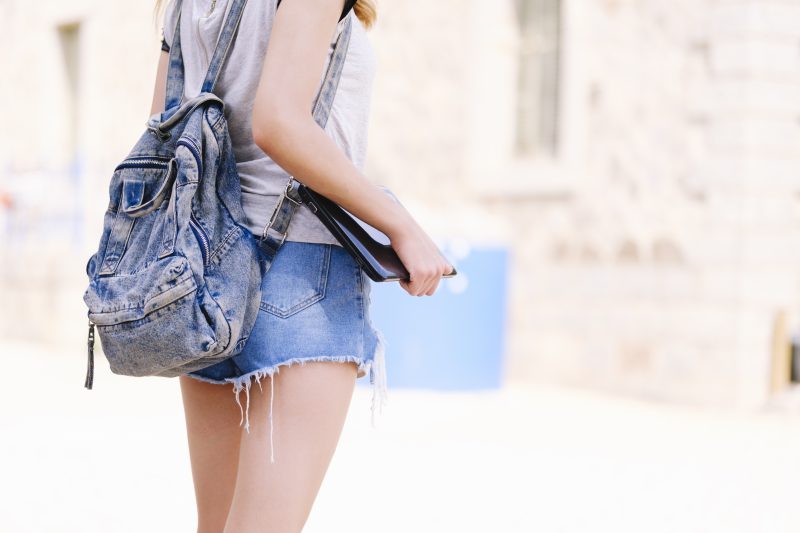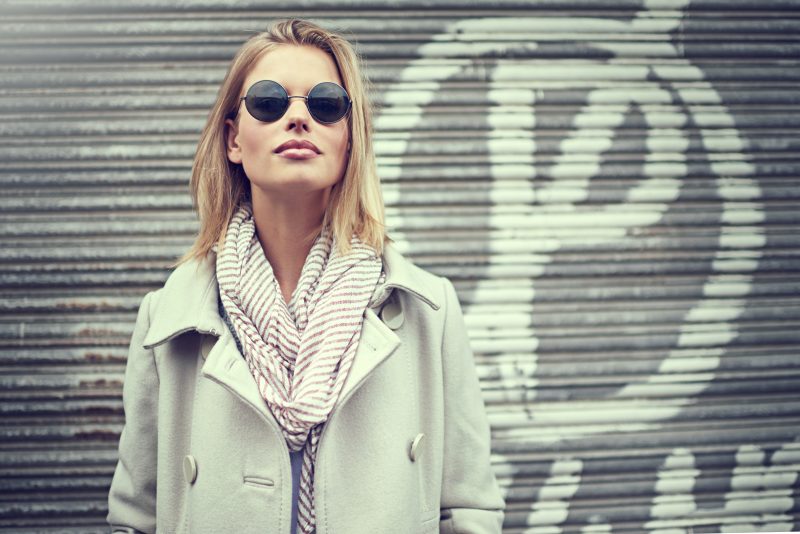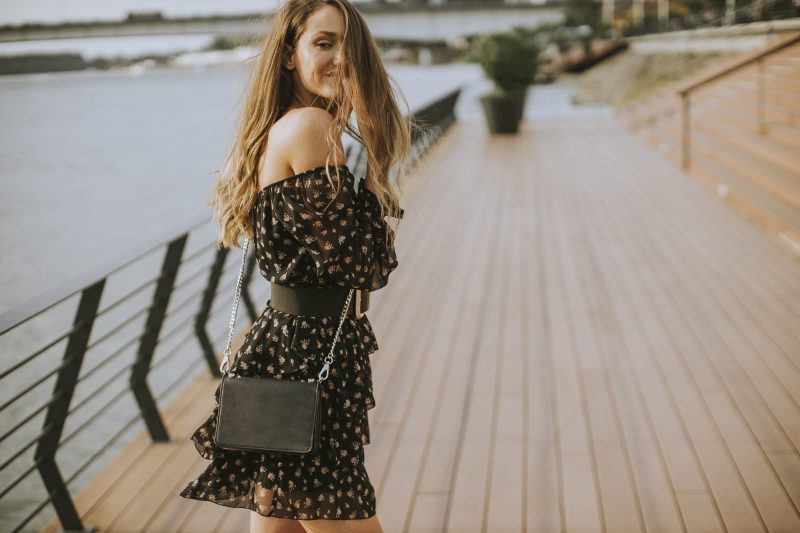I consider myself something of a denim purist. My perfect jean is a straight-leg, mid-rise vintage Levi’s 501 that’s gone through enough wash cycles to feel like an extension of my own skin. I’ve spent years hunting them down in thrift stores and vintage shops, enduring countless try-ons in dimly lit dressing rooms with questionable mirrors. Every pair in my collection has been personally vetted through my rigorous “squat test,” “sitting test,” and most importantly, the “do these make my ass look like it belongs to someone who occasionally does yoga rather than someone who just thinks about doing yoga?” test.
So when “weird jeans” started infiltrating my Instagram feed a few months back, I had thoughts. Loud thoughts. Judgmental thoughts. You know the ones I’m talking about – asymmetrical waistbands, extreme barrel legs, bizarrely placed seams, upside-down pockets, and what I can only describe as denim that looks like it got into a fight with a pair of scissors and lost spectacularly.
“This is what happens when designers run out of ideas,” I texted my friend Emma, sending her a screenshot of jeans that appeared to be wearing other jeans. “Who is wearing these? WHO?”
The answer, apparently, was everyone except me. Models off duty. Fashion editors between shows. Even my normally sensible colleague Tyler showed up to a meeting sporting a pair with an asymmetrical crossover waistband that made it look like his jeans were trying to give themselves a hug.
“They’re actually really comfortable,” he said when he caught me staring. “The weird waistband means no digging in when you sit down.”
“They look like denim origami,” I replied, which he took as a compliment though it absolutely wasn’t intended as one.

My resistance held firm until that fateful day at the Madewell press preview, where among the predictable array of sensible denim, a pair of what they were calling “offset jeans” caught my eye. The waistband was higher on one side than the other, creating a diagonal line across the abdomen, and instead of a standard straight leg, they had a slight asymmetrical flare – wider on one leg than the other. They were strange. They were impractical. They were, objectively, weird jeans.
And yet, something about them intrigued me. Maybe it was the denim itself – a substantial weight with just enough stretch, in a perfect worn-in indigo. Maybe it was fashion fatigue – after fifteen years of skinny jeans followed by five years of rigid straight legs, perhaps my eye was ready for something different. Or maybe it was simply that the PR person caught me looking and said those magic words: “We have your size if you want to try them.”
In the makeshift dressing room (a corner screened off with a linen curtain that definitely didn’t reach all the way to the floor), I reluctantly pulled them on, fully prepared to have my denim prejudices confirmed. I was expecting to look like I was wearing a fashion student’s failed final project. What I wasn’t expecting was to… kind of love them?
The asymmetrical waistband, rather than creating a funhouse mirror effect as I’d feared, actually had a surprisingly flattering way of drawing the eye diagonally across the body, creating visual interest where standard jeans offer none. The varied flare balanced my proportions in a way that standard jeans never had. And Tyler was right – the unconventional construction made them shockingly comfortable for sitting, standing, and even that weird squatting thing fashion people do during photoshoots that no human does in real life.
I walked out from behind the curtain with the hesitant gait of someone who isn’t sure if they’re having a fashion revelation or a psychological break.
“They’re cool, right?” said the PR person, who had definitely been trained to say this regardless of how anything looked on anyone.
“I think… I like them?” I replied, my voice tilting up at the end like I was asking permission.
“They’re very you,” she said confidently, which was a fascinating statement given that nothing about these jeans aligned with anything I’d ever worn before.
I left with the jeans, telling myself it was professional research. I’d wear them once, confirm that weird denim doesn’t work in real life outside of fashion previews, and have material for a scathing article about impractical trends.
Except that’s not what happened.
The first time I wore them was to meet friends for brunch, pairing them tentatively with my most normal white button-down and black loafers, hoping the conservative top half would balance the denim chaos below. I felt self-conscious walking down my street, certain that everyone from the barista at my local coffee shop to the guy walking his French bulldog was judging my fashion identity crisis.
But then something unexpected happened. The cool barista – the one with the stick-and-poke tattoos who never remembers my order despite my coming in literally every day – looked up and said, “Dude, those jeans are sick.”
At brunch, my friend Nora, whose fashion opinion I respect above almost anyone’s, immediately demanded to know where I’d found them. “They make your regular jeans look boring,” she declared, which was both a compliment and a devastating commentary on my carefully curated denim collection.
By the third wearing, I was fully converted. I discovered that the weird jeans actually paired beautifully with other wardrobe basics – a black turtleneck and boots, a simple white tee and sneakers, even an oversized blazer for a surprisingly office-appropriate look. The jeans were doing all the work, which meant I could do less. Getting dressed became easier, not harder.
The strangest discovery was how versatile they proved to be. Standard jeans signal a kind of studied casualness, but these weird jeans were chameleons. With flat sandals and a tank top, they were weekend-appropriate. With a silk blouse and heels, they worked for dinner at places with cloth napkins. The asymmetry read as intentional design rather than casual denim, elevating them beyond the traditional jean category altogether.
Since that first pair, I’ve fallen down a weird denim rabbit hole. I now own barrel jeans so wide they practically qualify as a skirt, a pair with an asymmetrical raw hem that looks like they were cut by someone in the midst of a psychological episode, and my newest acquisition – jeans with a front seam that spirals around the leg like a denim candy cane. My formerly pristine collection of vintage Levi’s sits neglected while I explore the outer reaches of jean possibilities.
For fellow skeptics contemplating a toe-dip into weird jean waters, I’ve developed a strategy for making the transition less traumatic:
Start with a single weird element rather than full denim chaos. An asymmetrical waistband is easier to integrate into your wardrobe than jeans that look like they’ve been deconstructed and reassembled by a toddler. A barrel leg might feel less extreme than a pair with multiple panels and contrast stitching.
Keep everything else relatively simple. The first few times you wear statement denim, pair it with the most basic pieces in your wardrobe. Think of the jeans as the main character and everything else as supporting actors.
Commit to at least three wearings before making a judgment. Weird jeans require a recalibration of your fashion eye. What feels strange on day one might feel innovative by day three as your perspective shifts.
Consider the weird element’s function, not just its form. My asymmetrical waistband isn’t just visually interesting – it’s genuinely more comfortable for all-day wear. The barrel leg isn’t just a statement – it allows for more movement. Sometimes weird design solves problems you didn’t know standard jeans had.
The psychology of weird denim is fascinating. I’ve noticed that on days when I wear my strange jeans, I carry myself differently. There’s a confidence that comes from wearing something deliberately different rather than conventionally flattering. Standard jeans say, “Don’t look at me.” Weird jeans say, “Yes, this was a choice.” It’s the fashion equivalent of making direct eye contact.
I’m not suggesting everyone should immediately purge their closets of traditional denim. My beloved 501s still have a place in my heart and my wardrobe rotation. But I am suggesting that the knee-jerk rejection I initially felt toward unconventional denim was more about comfort with the familiar than any objective fashion assessment.
Sometimes the trends we dismiss most vehemently are the ones that end up shifting our perspective. Six months ago, I couldn’t imagine wearing jeans with a spiral seam. Today, I can’t remember why that seemed strange. Fashion evolution happens in these small recalibrations of what we consider normal.
So if you spot me on the streets of Brooklyn in jeans that look like they’ve been through some kind of cubist transformation, just know that I’m not having a midlife style crisis.
I’m just belatedly embracing the weird jean revolution, one asymmetrical waistband at a time. And yes, they’re actually really comfortable.


